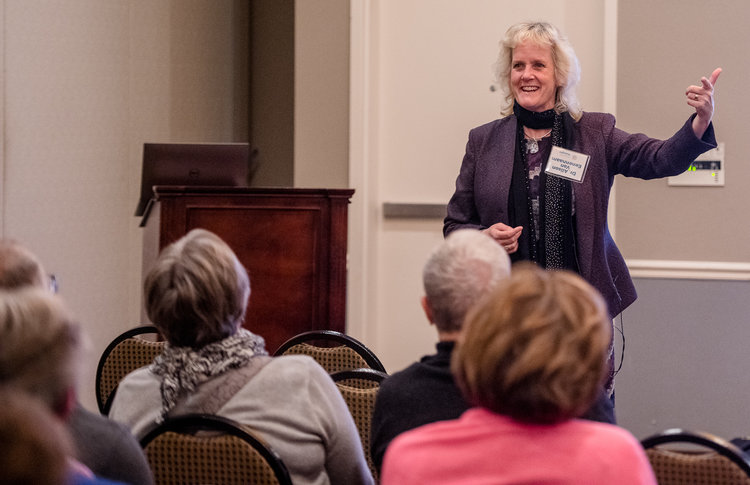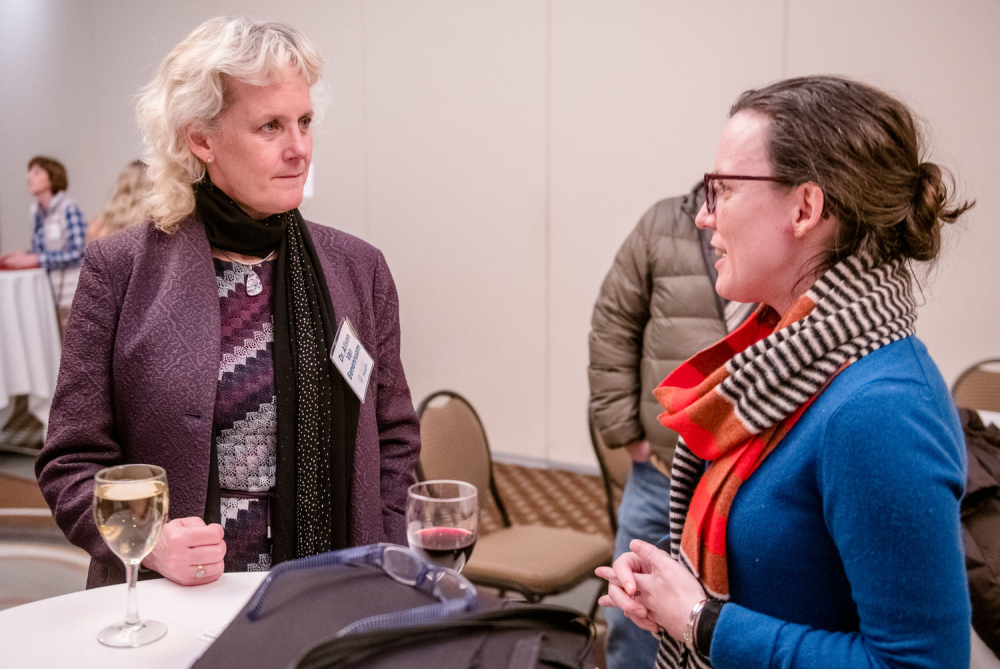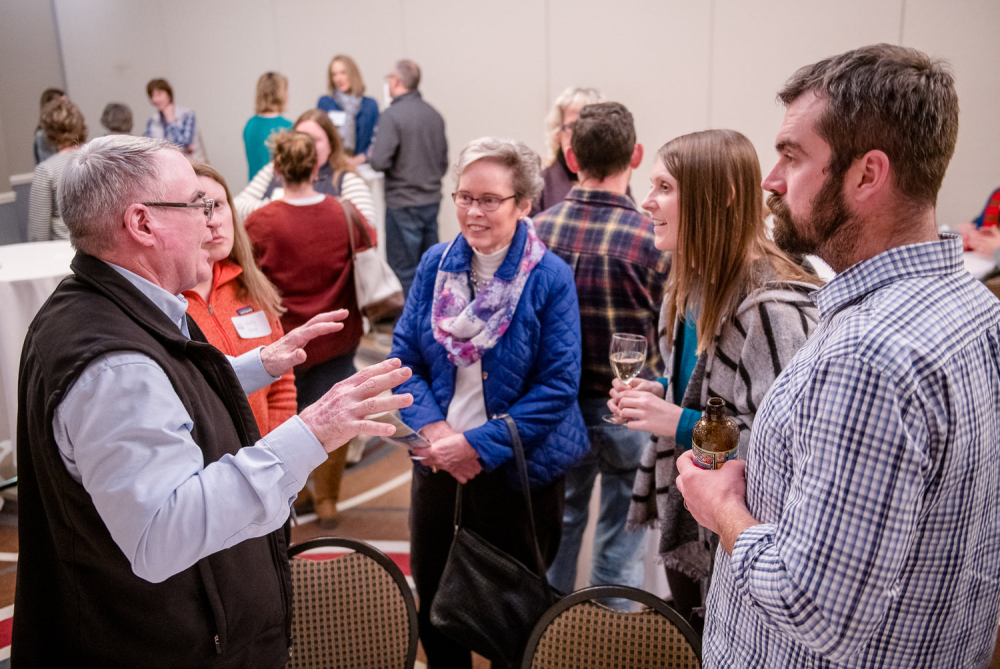The Sweet Spot of Sustainability
February 13, 2019
By Ann Thelen
What’s the perfect definition of sustainability in agriculture and food production? That’s the question Alison Van Eenennaam, Ph.D., animal geneticist and extension specialist at the University of California at Davis, posed during the Iowa Food & Family Project’s (Iowa FFP) recent Food for Thought discussion series in late January.
The perfect definition of sustainability is a sweet spot where environmental, social and economic goals are perfectly balanced. But in the real world, achieving this ideal sense of bliss is practically impossible without some level of impact, sacrifice and ramification.
 For example, the most environmentally friendly approach may not be the most economically sustainable approach for a farmer. Or, it may make the food outrageously expensive for the consumer. Misinformation around food and agricultural topics can do real damage to nearing a sweet spot of sustainability.
For example, the most environmentally friendly approach may not be the most economically sustainable approach for a farmer. Or, it may make the food outrageously expensive for the consumer. Misinformation around food and agricultural topics can do real damage to nearing a sweet spot of sustainability.
Listening to Science
So, how do the agricultural community and the food-consuming public marry up a shared definition of sustainability, which makes both groups feel good about their decisions?
It starts with objectively looking at facts, listening to what science tells us and learning from history, Van Eenennaam says. At the top of her list is dispelling the myths about health implications associated with modern agriculture. Marketers have monetized fear – most of which is entirely unfounded – on the backs of trusting consumers. And, it’s hitting their wallets and trust in certain foods.
“I see and hear discussions among the public about food, and often they are so out of whack with science,” she says. “I think a lot of it boils down to fearmongering through anecdotal information, vivid language and failing to listen to what science shows us.”
Take the case of Genetically Modified Organisms (GMOs). Despite the fact hundreds of researchers worldwide have studied GMOs and their potential adverse health effects for two decades – and found none – consumers are still fearful. Food marketers capitalize on this perception and consumers pay the price.
In terms of actual food safety risks, foodborne pathogens rank at the top of the list, versus consuming GMOs, trace levels of pesticides (natural or synthetic) and purchasing conventional food rather than organic food. The latter three don’t pose a risk, according to Van Eenennaam.
There are only 10 genetically modified crops available today: alfalfa, apples, canola, corn (field and sweet), cotton, papaya, potatoes, soybeans, squash and sugar beets. But, because GMO-free has become a trending labeling term, some companies label their products GMO-free even when a GMO alternative doesn’t exist. Marketers place non-GMO icons on everything from olives and tomatoes to beans and milk.
Even though foodborne pathogens are the No. 1 cause of food-related illnesses, Van Eenennaam points to a revival of people advocating for drinking raw milk. In the early 1900s, raw milk caused 25 percent of all food and waterborne illnesses, including tuberculosis, resulting in many infant deaths. Pasteurization eliminates these concerns yet maintains milk’s nine essential nutrients and high protein count.
“People are 150 times more likely to get sick from drinking raw milk over pasteurized milk,” she says. “However, some individuals have used fearmongering to reignite this debate, which science clearly silenced nearly a century ago.”


Tradeoffs Always Result
As a researcher and geneticist, Van Eenennaam is passionate about bridging what she sees as a significant disconnect between people’s understanding of food and sustainability with science.
Why should all this matter to consumers and how does it impact sustainability? The answer is simple according to Van Eenennaam. There is always a tradeoff, and sometimes it’s positive and sometimes it’s negative. She shares some examples:
- If technology had been frozen at 1961 levels, we would have needed to increase cropland by 27 percent to feed 6 billion people in 2000. The tradeoff: more available land for housing, businesses, industries, recreation, forests and wildlife, to name a few.
- GMO crops have reduced global pesticide spraying by 671.4 million kilograms – or 8.2 percent. The tradeoff: The environmental impact associated with herbicide and insecticide use on crops has been reduced by 18.4 percent.
- GMO-free food costs an average of 33 percent more than a comparable food item that is not GMO-free. In the U.S., a complete shift to purchasing GMO-free food products would increase the average family food budget from $9,462 to $12,181 per year. The tradeoff: Consumers pay the price, yet there isn’t a scientific basis to show there are any positive or negative impacts on health.
Van Eenennaam urges people to consider the tradeoffs when it comes to technology in agriculture. If left unconsidered, a vocal minority may choose one pillar of sustainability as their ultimate nirvana without regard to the impacts across the entire spectrum.
“The cost/benefit analysis of any particular piece of agricultural technology is a very complicated discussion. We need that nuance in the public sphere in order to determine how to best serve all of us,” says Shane Church, an event attendee and Iowa FFP Champion from Pleasant Hill.
Food for Thought | Dr. Alison Van Eenennaam
Please note, by clicking the links you will be leaving a partially funded checkoff site.
Find the full presentation above or on the Iowa FFP YouTube Channel. If you watch the presentation and provide your feedback in this survey by noon on Wednesday, March 6, you’ll be entered to win a $50 Hy-Vee gift card courtesy of Iowa FFP.
About Food for Thought
Iowa FFP’s Food for Thought provides a closer look at Iowa agriculture and food supply through the eyes of award-winning journalists, authors and scientists. By inviting thought leaders in food and agriculture to visit Iowa farms and lead thought-provoking conversations, the event challenges perceptions and encourages open discussion.
In recent years, participants heard from Tamar Haspel, an award-winning journalist and Washington Post contributor; Jayson Lusk, a food and agricultural economist and author from Oklahoma State University; and Nathanael Johnson, a food writer for Grist, former editor at Meatpaper and author of All Natural and Unseen City.